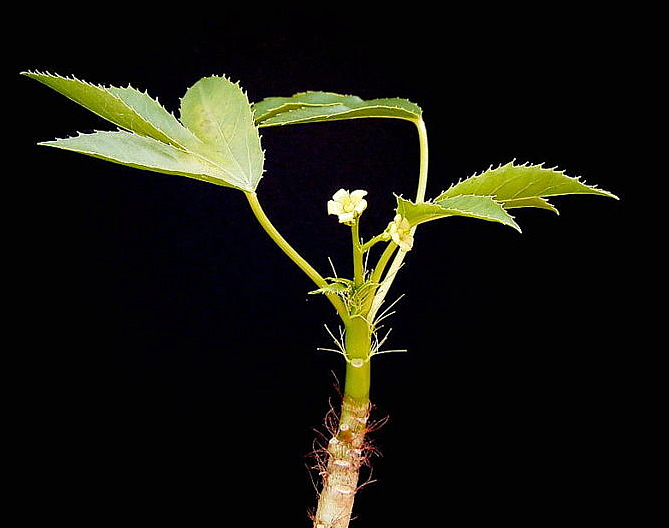

Zitierweise / cite as:
Carakasaṃhitā: Ausgewählte Texte aus der Carakasaṃhitā / übersetzt und erläutert von Alois Payer <1944 - >. -- Anhang A: Pflanzenbeschreibungen. -- Jatropha grandulifera Roxb. -- Fassung vom 2007-03-19. -- URL: http://www.payer.de/ayurveda/pflanzen/jatropha_grandulifera.htm
Erstmals publiziert: 2007-03-19
Überarbeitungen:
Anlass: Lehrveranstaltung SS 2007
©opyright: Dieser Text steht der Allgemeinheit zur Verfügung. Eine Verwertung in Publikationen, die über übliche Zitate hinausgeht, bedarf der ausdrücklichen Genehmigung des Verfassers
Dieser Text ist Teil der Abteilung Sanskrit von Tüpfli's Global Village Library
WARNUNG: dies ist der Versuch einer
Übersetzung und Interpretation eines altindischen Textes. Es ist keine
medizinische Anleitung. Vor dem Gebrauch aller hier genannten Heilmittel wird
darum ausdrücklich gewarnt. Nur ein erfahrener, gut ausgebildeter ayurvedischer
Arzt kann Verschreibungen und Behandlungen machen!
Falls Sie die diakritischen Zeichen nicht dargestellt bekommen, installieren Sie eine Schrift mit Diakritika wie z.B. Tahoma.
Verwendete und zitierte Werke siehe: http://www.payer.de/ayurveda/caraka0001.htm

Abb.: Jatropha grandulifera Roxb.
[Bildquelle: Frank Vincentz - Wikipedia]
Drury:
"Jatropha glandulifera (Roxb.) Do. Addaley, Tam. Nela-amida, Tel.
Description.—Small plant, 1 foot, erect, pubescent; leaves 5-3 cleft, serrated, smooth, glaucous, almost veinless; petioles sub-villose, longer than the leaves, with glandular hairs; petals of female flowers ovate, the length of the calyx; capsule muricated, as large as a hazel nut; seed size of a pea; flowers small, greenish yellow. Fl. All the year.—Roxb. Fl. Ind. iii. 688.—J. glauca, Vahl, ?------Panderpore in the Deccan. On bunds of tanks; Northern Circars.
Medical Uses.—An oil is expressed from the seeds which, from its stimulating property, is reckoned useful externally applied in cases of chronic rheumatism and paralytic affections. The plant exudes a pale thin juice, which the Hindoos employ for removing films from the eyes.—Roxb. Ainslie.
Economic Uses.—In 1862, Dr Thompson, civil surgeon, of Malda, submitted to the Agri.-Hort. Society specimens of cloth dyed with a green vegetable dye prepared from the leaves, it is believed, of this species. He wrote as follows : One maund of the dried leaves will dye 1280 yards of cloth of a fine apple-green colour. The supply is cheap and unlimited, and the cultivation is easily extended from cuttings or seed, requiring little care or watching, as no animal will cat it. The plant is doubly valuable from the seeds yielding a fine, clear, limpid oil for burning purposes. It takes half an hour to dye a whole than of cloth. For preparing the oil the seeds should be collected as the capsule begins to split or change colour from green to brown ; the latter should then be thrown down on a mat, and covered over with another mat, and on a few hours' exposure to a bright sun the seeds will have separated from the shell, for if allowed to remain on the shrub till quite ripe, the capsule hursts, and the seeds are scattered and lost."
[Quelle: Drury, Heber <1819 - 1872>: The useful plants of India : with notices of their chief value in commerce, medicine, and the arts. -- 2d ed. with additions and corrections. London : Allen, 1873. -- xvi, 512 p. ; 22 cm. -- s.v.]